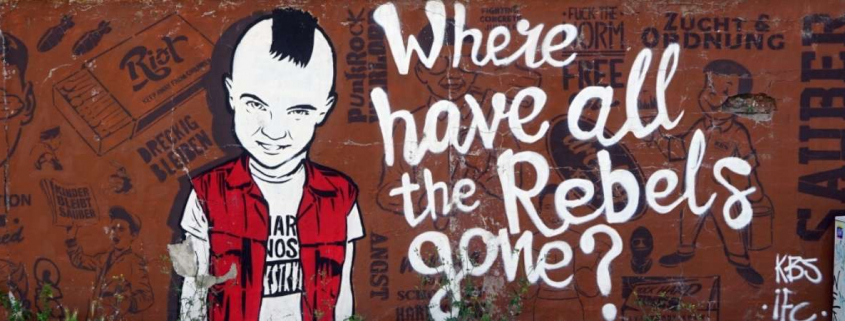The Story of Dr. Quality and Ms. PTS
Mayday’s Executive Assistant Quality Assurance Manager, Ciara Killeen looks at how the personalised, transitional and strength based mentality has crept into every aspect of her role – even leading to those Jekyll and Hyde moments!
This is a modern day Jekyll and Hyde story.
After a 12 month period of focusing on the re-development of the Personal Transitions Service Operational Guide, I found myself seated in front of 4 colleagues from Mayday’s Housing Team. I was in the middle of an audit and it was the first such audit I had undertaken in some time.
In the lead up to the audit visit I had been pondering how I could combine the 2 strands of my work as a PTS systems changer and as the Quality Assurance Manager working with the Housing Team. They were asking me very good questions about how they could improve their practice by developing the housing policies and processes. However, since I had last carried out such an audit, the old Dr. Quality was no longer in control; Ms. PTS had taken over.
I started to wax lyrical about the benefits of reflective practice. I spoke about moving away from form filling and physical paperwork and only capturing meaningful data. I posed the question, ‘Did everyone living with Mayday need a risk assessment plan if they didn’t have any issues to discuss?’ I spoke about developing local feedback loops and offering people the choice about how they paid their rent. I asked whether weekly room checks promoted the principles of dignity and respect?
And then I sat back and revelled in my mischief making. The team had expected me to ask for examples of how they had stuck to policies or enforced processes. They expected me to hand out ticks or crosses. Instead, I asked how they could improve processes to make them more strength-based and personalised. You could feel the effect of what we sometimes describe as the ‘PTS Coach bomb’ ripple through the room; it was an example of internal systems change happening in real time.
At first, the Housing Team were almost stunned to silence. Then there was nervous laughter. I could hear Dr. Quality in my head starting to panic, ‘Push the escape button! Revert to traditional auditing!’ she cried. But Ms. PTS remained resolute.
One colleague said they felt the room checking process was a ‘blunt instrument’. Another said they had printed some new feedback cards to handout to people if they wanted to share their thoughts. The 3rd colleague described how the housing risk assessment was no longer fit for purpose and they went on to suggest some really good amendments. The real eureka moment came when the team described what happened after they had offered people the option to pay rent charges via standing order.
The team had initially been sceptical, ‘We thought rent arrears would increase….we thought people would take the money out of their accounts before the payment was due….we didn’t have much hope that standing orders would make a difference.’ And then one person agreed to set-up a standing order and their rent was paid on time every month. But, far more importantly, from this small offer of choice, this tiny aspect of personalisation, this person realised they had a choice. They had lots of choices actually. They chose to start speaking with the Housing Team about future housing options for when they were ready to move to independent living. They chose to start making plans.
And then the penny dropped as the Team went into collective shock. Until that moment, they had not realised the impact of such a small change, such a small offer of choice and personalisation. A secondary outcome was rent payments made on time but the primary outcome was the rebalancing of power which enabled someone to plan for their transition out of Mayday accommodation.
I called this a modern Jekyll and Hyde story which brings to mind the idea of dual identities; the Quality Assurance Manager carrying out a housing audit and the PTS systems changer, a member of the Innovation Partnership, developing person-led, strength-based transitions approaches. But what’s modern is that both parts of my role can co-exist. I was still carrying out an audit – an independent examination of team performance to highlight best practice and develop an action plan. But it was strength-based as I asked the team to review the processes as well as their actions. It promoted best practice through questioning together what we can do better.
And this idea of duality can be applied to the different teams who form our organisations too. Yes, the PTS and housing models are different. And yes, the Coach Team and Housing Team do work autonomously to each other. But that doesn’t mean we cannot promote best practice between colleagues, developing a one team approach which will enable internal systems change to flourish. The 2 strands of Mayday’s work can co-exist harmoniously so long as we continue to be led by the same principle, which is the foundation of what we do; the toughest of times should be a transition in a person’s life, during which they are treated with dignity and respect.
I always finish the audit process by asking teams to reflect on Mayday’s Quality Statement – a set of principles we all share, believe in and promote, no matter which team we work in. I asked my housing colleagues what quality meant to them; ‘Respect….dignity….empowerment….transitional and not permanent…’
Different team, different model but the same shared principles for how people should be treated. Whether the team think I am a ‘Ms. Hyde’ auditing monster, on the other hand…





